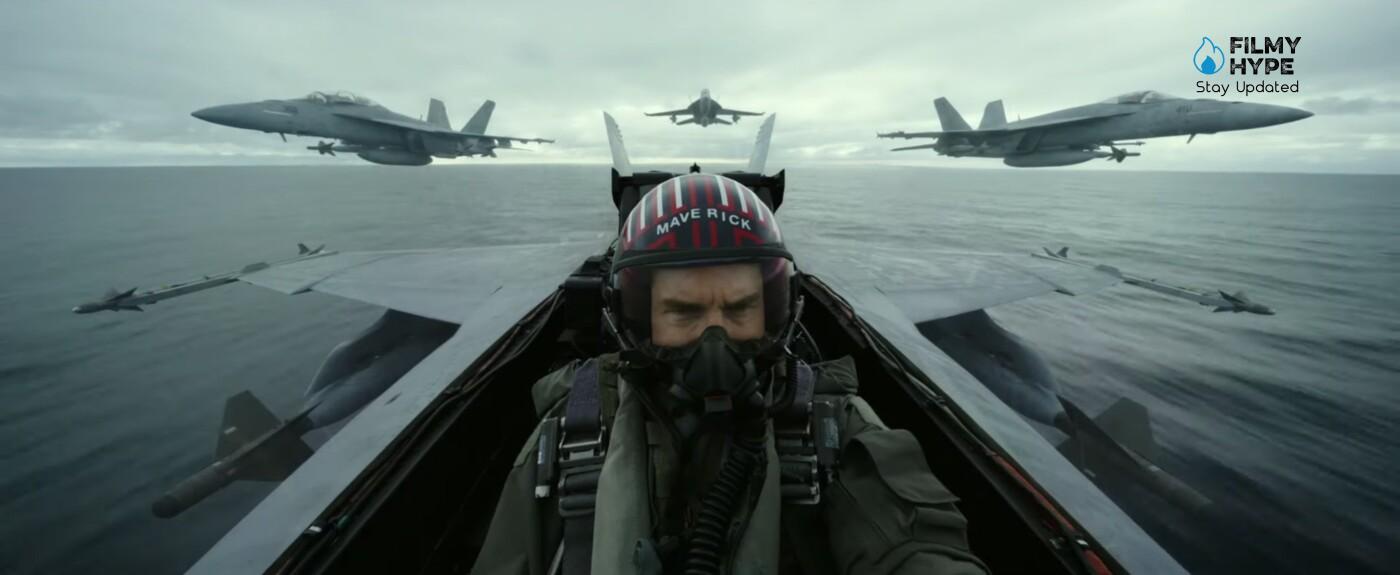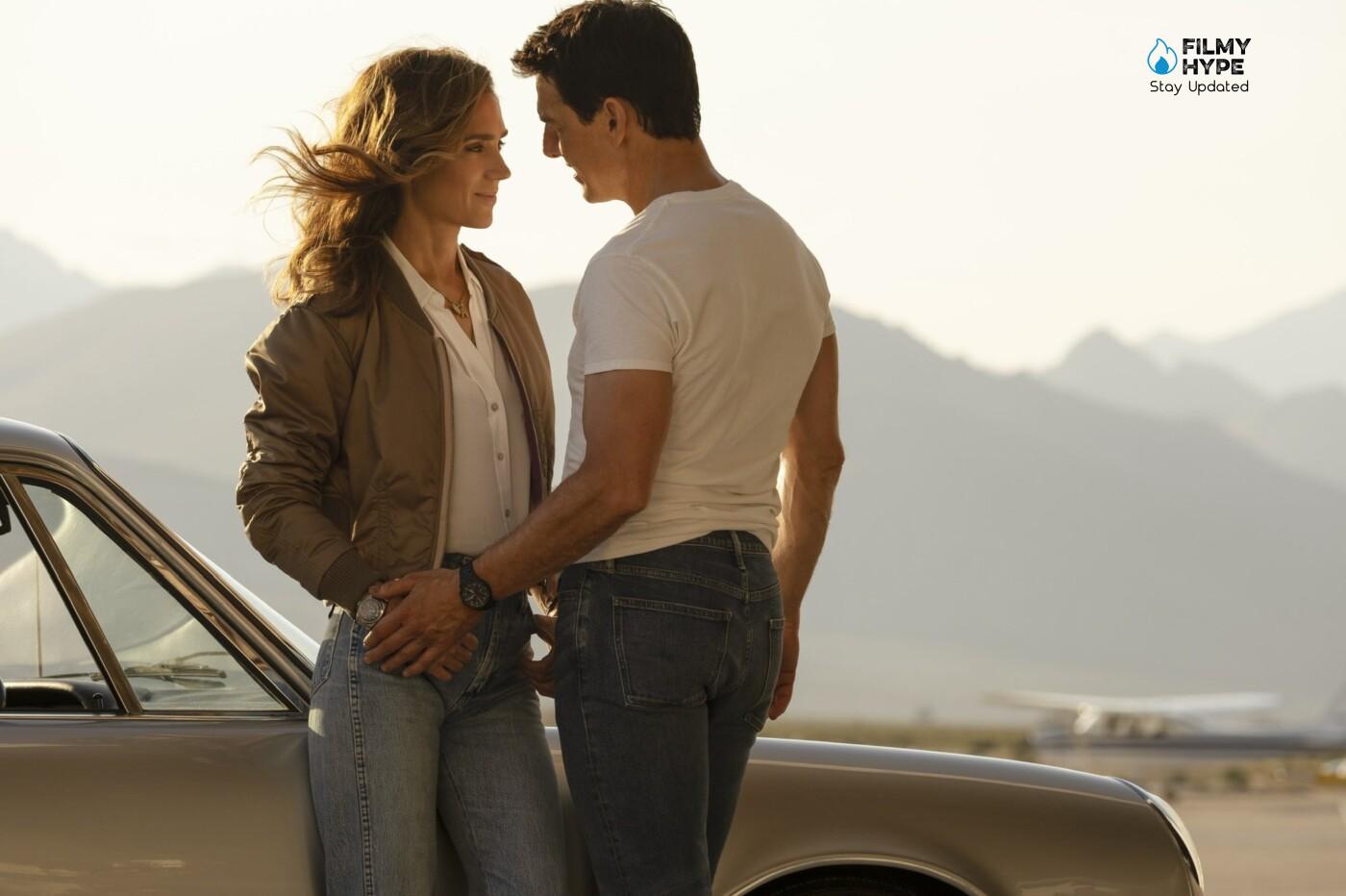Top Gun: Maverick Review: Tom Cruise Manages To Relive An Era That Is Now Over On The Big Screen
Cast: Tom Cruise, Miles Teller, Jennifer Connelly, Jon Hamm, Glen Powell, Lewis Pullman, Ed Harris, Val Kilmer
Director: Joseph Kosinski
Where to Watch: In Theaters (from 26th May)
Filmyhype.com Ratings: 4/5 (four stars) [yasr_overall_rating size=”large”]
We are at least excited to tell you a preview, with our review of Top Gun: Maverick, the impressions that one of the most anticipated sequels in the history of cinema left us. We are talking about one of the greatest cults of the 80s with a fascinating Tom Cruise as never before, a model of genius and recklessness, an idol for a whole series of generations to come. But it wasn’t just Maverick’s charismatic figure that dictated the success of the first film; in fact, there is also an exciting love story and soundtracks that have remained etched in the memory of generations. A film focused on Tom Cruise, on action and patriotism: fiasco for critics, immense success at the box office. Tony Scott has therefore left a legacy as heavy as a boulder.

It follows that the worthy successor of a film of this caliber must try his hand at a test that is anything but simple. But the preconditions for this sequel seem to be good. Let’s start with the direction: Joseph Kosinski, a name that made us hopeful having appreciated his previous works such as the sci-fi Oblivion (2013), always with Tom Cruise. In addition to the cast, the names of Ed Harris (A Beautiful Mind), Jon Hamm (Mad Men), and Miles Teller (Whiplash) also appear. Of course, Val Kilmer could not be missing as Iceman, Maverick’s number one rival in the first chapter. If you are curious to know more about the new Top Gun Maverick, then buckle up and continue with our review.
Top Gun: Maverick Review: The Story
More than thirty years have passed since the episodes narrated in the first film when the scenes ended with Lieutenant Mitchell (aka Maverick) asking to be allowed to become a Top Gun instructor. After a long time, he continues to be the best aviator in the entire American Navy but his temperament and unruly genius have led him to leave the aviation school for the number one in the United States. Maverick currently works as a tester of new military prototypes reaching speeds that no one has ever dared to even get close to. But a suicidal military mission recalls the old ace of the skies to the very flight school where he was trained to become the best.
An unspecified state hosts a bunker intended for the storage of tons of depleted uranium. The Pentagon is serious about destroying everything before there are irreparable consequences. The operation appears particularly arduous, so difficult that there seems to be no real escape plan once the objective is destroyed. Maverick will have the task of educating a carefully selected team of Top Gun who will have to bomb the site and be able to return home safe and sound. But the closer the date of the mission approaches, the more the undertaking seems impossible, at least without the necessary sacrifice of human lives.
Top Gun: Maverick Review And Analysis
It seemed impossible to replicate without imitating step by step the atmospheres and cinematic depth of one of the most beloved cults of all time, yet Paramount Pictures, Joseph Kosinski, and of course Cruise have succeeded, creating a feature film born of our times but with an eye to a glorious and alluring past. The pilot loses his fur but not his vice, allowing the viewer to instantly recognize the indomitable character of Mitchell, who has become a multi-decorated ship captain and is still in love with airplanes and adrenaline. When he disobeys a direct order from one of his superiors, Maverick is forced to return to TOPGUN, the combat school for the best pilots in the US Navy, this time as a teacher. His task is to train and then choose six students for an almost impossible mission, “from two miracles in one”, while having to face the difficult relationship with Goose’s son, Bradley “Rooster” Bradshaw., and gradually discovering himself wiser in his unattainable and charismatic temerity.
This is where the narrative soul of the sequel lies, partly written (or re-written) by the cruising companion McQuarrie, who sets up a clear and intelligent concept of reference to the first chapter, wisely taking its wake, supporting it in the psychological construction of relationships – including the inevitable clichés – and finally overcoming it without any hesitation in cinematic innovation. A credit that goes first to the production control of Cruise, in its far-sighted and clean way, then to the dialogues created by McQuarrie, Ehren Kruger, and Eric Warren Singer, and finally to the chosen protagonists, capable of perfectly embodying the roles of the new TOPGUN elite.

Maverick’s trump card – what perhaps most distinguishes him from competitors, from contemporary cinema and other nostalgia operations – is that he does not chase the giants of today, mimicking their poses. Top Gun: Maverick doesn’t give in to the temptation to get everyone to agree, trying to bring as many people into the room as possible, no. He focuses on those who find it tempting to find a movie like Top Gun in theaters, trying to give him exactly what he wants.
You understand it immediately, as it certainly gives more space to the few female characters present, keeping the bluster of the young pilots at bay, but not upsetting the dynamics of power and relationships between aviators and civilians, pilots and superiors, men and women. While more muted than in the past, testosterone in the air is undeniably noticeable. Top Gun does not deny the past but with great foresight adjusts the shot, losing along the way that exasperated machismo that gives the original even a vague homoerotic persistence.
Joseph Kosinski is the right director for the operation. He has always been in great harmony with Cruise, so much so that he does not try to overshadow him with his directorial virtuosity. Everything in the film is at the service of the Maverick myth, but that doesn’t mean the Top Gun sequel is lazy, quite the opposite. He takes advantage of every technological advance that has taken place in the cinema to give an incomparably higher number of aerial combat scenes than in the past. Compared to the original, in Maverick the scenes aboard the fighters are more spectacular, prolonged, clear to read, and realistic. On closer inspection, the clashes between fighters are the only truly realistic element of the film.
In recent years it seems to me that I have done nothing but review your nostalgic blockbusters, with a firm eye on the past. Top Gun: Maverick is undoubtedly part of the trend of films that have very little dialogue with the present. Indeed, it seems to be in a bubble in which contemporary anxieties and common feelings remain at a safe distance, to immerse yourself in a dimension in which only one smartphone appears fleetingly (and forces the owner to pay for a drink at the whole bar).
Top Gun: Maverick is a way without real villains, with unspecified rogue states and faceless enemy pilots at the center of an exhilarating but very implausible mission. It speaks of pre-emptive war, but it is not belligerent at all. At the beginning of the film, we are in the real world, in 2022, when the drones seem ready to retire all the top gun pilots, not just Maverick. Then he performs the first miracle, reaching 10g: he transports us to a different dimension, in which the 59-year-old Cruise plays a brilliant pilot who has not lost an ounce of his charm and skill, but on the other hand has become wiser, definitely more able to manage emotions.
More than a conservative vision (which this franchise was and which is), more than an empty nostalgia, Top Gun seems a miracle, the last chance jumped at by Cruise, Paramount, and Bruckheimer to revive a historical era and cinematic that is seen now appears simple, happy, almost desirable, definitively over. The film follows this path and does not give in to any modern elements: it has a closed ending, it has no extra scenes during the credits, and it does not give in to the desire to suggest a sequel or a franchise. Even musically Hans Zimmer does not yield to musical suggestions that have emerged in the last 30 years.
Top Gun: Maverick is a leap into the past made with a lot of transport or with a lot of calculation, a demonstration of how the cinema of yesteryear still works if done with the right names, with the right approach. It would be the closing of a remarkable circle and we hope so: the impression is that all the gas available in this film has been consumed and that Cruise has no heirs: the latest star in a Hollywood sky where the stars are more and more human.
Top Gun: Maverick Review: The Last Words
Top Gun: Maverick is one of the most successful and innovative sequels in the history of cinema. The narrative structure is standardized but in balance, in a story of mourning, inheritance, and rebirth where Tom Cruise remains the absolute protagonist in the game, surrounded by supporting characters in a continuous tug-of-war to conquer the scene from time to time. Bravo Miles Teller in the role of “Rooster”, fundamental for the emotional and psychological growth of Pete and vice versa, as well as Jon Hamm in the role of the “new” Viper. Where the film becomes almost miraculous and truly unique, however, is in the visual and action system, in dynamic and reckless storytelling that enters the cockpit of jet fighters together with its interpreters, making them both actors and even directors (in part) of the spectacular flight sequences. The training scenes were captivating, the final 40 minutes absolutely off the charts, for emotion, dedication, spectacularity, and cinematic logic. There is fidelity and love for a glorious past but also the desire to look ahead, beyond the horizon of the possible and experienced. A nostalgic and unsettling cinema, a reckless way of thinking big.




